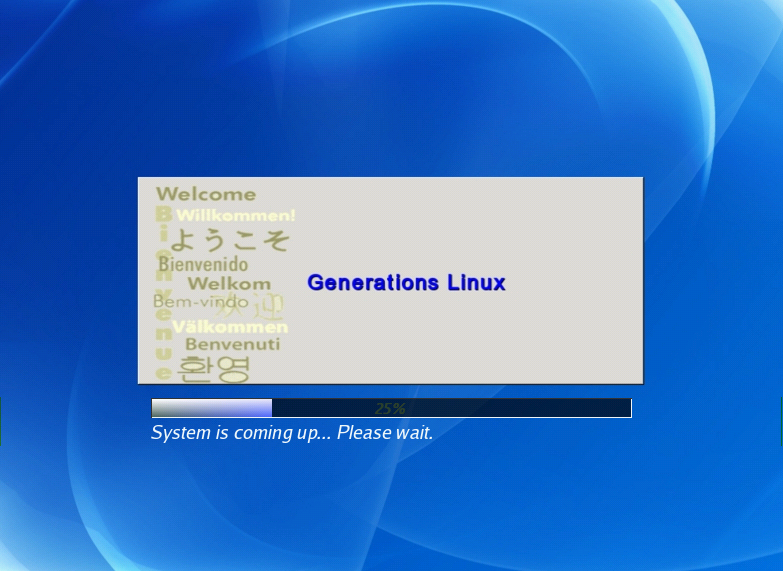Main Page: Difference between revisions
Jump to navigation
Jump to search
No edit summary |
No edit summary Tag: Reverted |
||
| Line 1: | Line 1: | ||
Welcome to the Generations Linux documentation on the web. | |||
Introduction | |||
[[File:splash-boot.png||splash bootup]] | |||
Generations is for i386 to amd64/x86_64 boxes as its namesake implies. | |||
The default is to boot using Linux kernel 5.14 (x86_64), for older systems from the boot menu use the up/down arrow keys to select 32-bit which is kernel 3.12.2(overlayfs). | |||
In the about section you will find information on where to download ISO live images. An ISO live image allows one to boot into Linux from a CD/DVD/USB or run within a virtual machine environment, without installing any software. | |||
The term software package or simply package used in these pages refers to an RPM Package Manager (RPM) file, or one that is already installed. | |||
Revision as of 07:12, 25 October 2022
Welcome to the Generations Linux documentation on the web.
Introduction
Generations is for i386 to amd64/x86_64 boxes as its namesake implies.
The default is to boot using Linux kernel 5.14 (x86_64), for older systems from the boot menu use the up/down arrow keys to select 32-bit which is kernel 3.12.2(overlayfs).
In the about section you will find information on where to download ISO live images. An ISO live image allows one to boot into Linux from a CD/DVD/USB or run within a virtual machine environment, without installing any software.
The term software package or simply package used in these pages refers to an RPM Package Manager (RPM) file, or one that is already installed.
